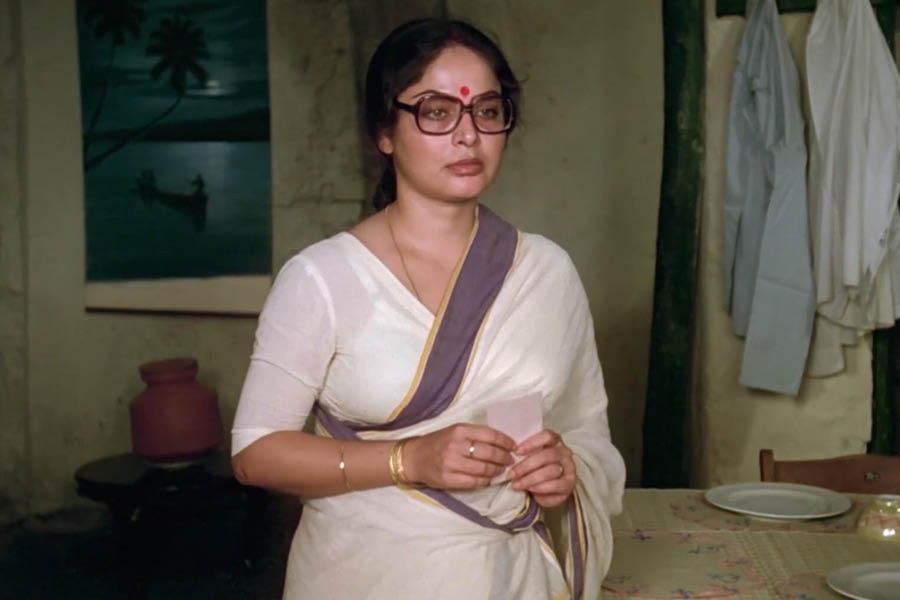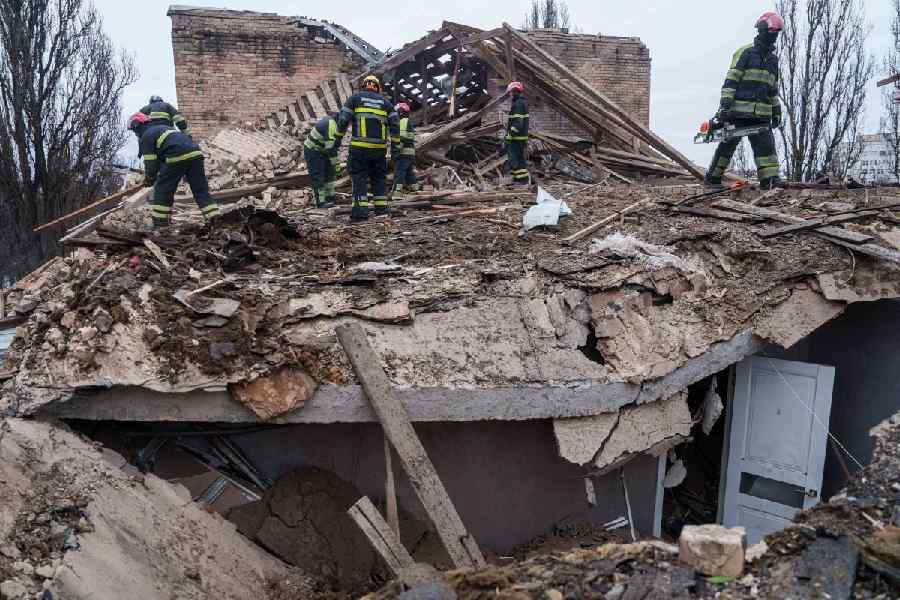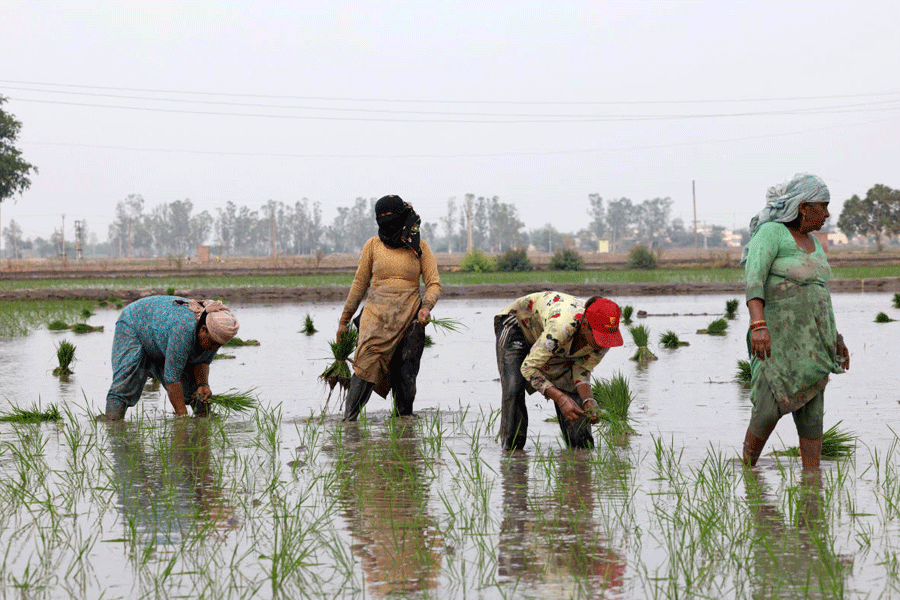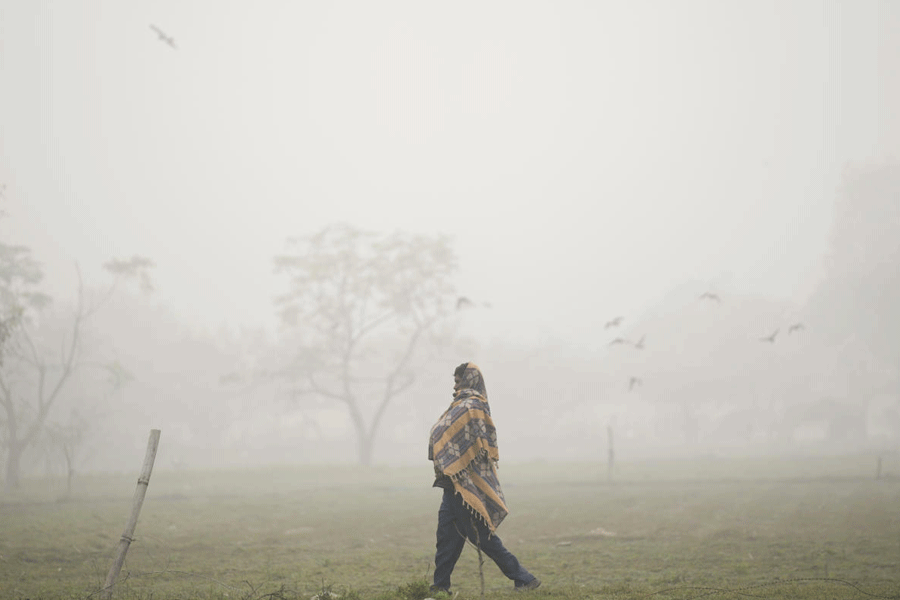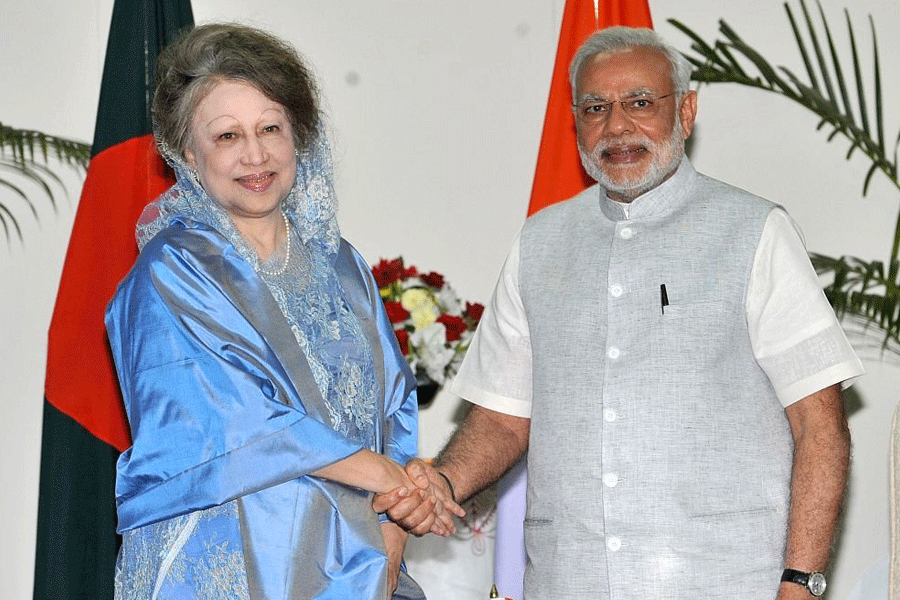In the almost schizophrenic world that was Hindi cinema of the 1970s, Rakhee occupied a special place. A major star who was cast opposite all the mega heroes of the era, she was unique in many ways. There were Shabana Azmi and Smita Patil at one end of the spectrum. At the other end we had Hema Malini, Zeenat Aman and Parveen Babi. Firmly ensconced in the centre was Jaya Bhaduri, supported by directors like Hrishikesh Mukherjee and Gulzar who gave her author-backed roles.
Rakhee made it big commercially despite neither being an arthouse favourite like Shabana Azmi nor possessing the western chutzpah of Zeenat Aman (in fact, for a leading mainstream heroine of the era, Rakhee came across as distinctly gauche in the couple of sequences that come to mind in Muqaddar Ka Sikandar and Kasme Vaade in which she sported a western outfit). For that matter she wasn’t as nimble on her feet like Hema Malini (she never played a dancer), neither did she have big directors backing her like they did Jaya Bhaduri at the beginning of her career.
The Early Years
Rakhee gave early glimpses of her abilities in small but significant roles in Reshma Aur Shera and Lal Pathar, while delivering a knockout of a performance with two distinctly different characters in only her second film, Sharmilee — all in 1971. In Reshma Aur Shera, the sequence where she learns of the death of her husband is remarkable for what she brings to it so early in her career. A National Award Special Souvenir for 27 Down within three years of her debut in Jeevan Mrityu provided a portent of things to come.
27 Down (1974)
Ramesh Bakshi’s Hindi novel Athara Sooraj Ke Paudhe becomes Awtar Kaul’s heartfelt existential meditation, and remains, even 50 years later, as striking a film as it was pioneering in 1974. Though A.K. Bir’s handheld cinematography and the film’s overall aesthetics, including its background score, are justly celebrated, Rakhee’s nuanced take on an independent working woman who has more steel in her than the film’s flawed protagonist – truly a break from the synthetic women in films of the era – deserves special mention. In a year that gave us two more memorable women characters in Hindi cinema who continue to be discussed — Lakshmi (Shabana Azmi in Ankur) and Deepa (Vidya Sinha in Rajnigandha) — Rakhee’s Shalini in 27 Down cries out to be rediscovered.
Women of Substance: Tapasya (1976), Doosra Aadmi (1977), Baseraa (1981)
It didn’t get bigger than Yash Chopra for a Hindi film heroine of the era, and Kabhi Kabhie in 1976 cemented Rakhee’s place in the industry. Though her performance, holding her own in a multistarrer, is justly celebrated, it was another film that established her box-office credentials: Anil Ganguly’s tearjerker Tapasya. What sets Indrani Sinha apart from the many martyred women of Hindi cinema of the time is the amazing restraint and conviction Rakhee brings to her character and the risk she takes in essaying a mature, middle-aged woman so early in her career.
With Doosra Aadmi, Rakhee takes her penchant for experimentation even further. She plays Nisha, an executive in an ad agency who falls in love with a married younger man who reminds her of her deceased lover. It was by every reckoning a gamble in an industry that put a premium on chaste heroines in sanctified relationships, and Rakhee makes it special.
In Baseraa, Raakhee, by now a bona fide star of major blockbusters, returns to the all-sacrificing mode of Tapasya. In one of her most acclaimed roles, she plays a woman returning to her family after being confined to a mental asylum for 14 years. The plausibility or otherwise of the narrative becomes inconsequential in the face of her superb portrayal that puts even an actor like Rekha, then at the top of her game, to the shade. This is, probably, the only film where Rakhee lip-synced to a song penned by her husband, Gulzar: the sublime Jahan Pe Savera Ho.
Making it Count with Amitabh Bachchan

Still from Kabhi Kabhie (1976). IMDb
While Amitabh Bachchan’s on-screen partnerships with Rekha, Zeenat Aman, Jaya Bhaduri and even Parveen Babi are discussed quite often, the actor he co-starred with in the maximum number of films does not quite figure in conversations. Rakhee and Amitabh Bachchan acted together in as many as 13 films. Even if one were to discount three – Reshma Aur Shera, Shaan and Shakti – in which they weren’t cast opposite each other, that still leaves her with more films as Bachchan’s leading lady than any other.
But more than the numbers, what is important is that she was a Bachchan heroine like no other. There was a gravitas about her in these films that few Bachchan heroines possessed. One reason for this might be that Bachchan was never cast as a lumpen element opposite her — barring Kasme Vaade (1978, in which too the ruffian was offset by the professor; interestingly enough it is Rekha who executes a mujra here) and Muqaddar Ka Sikandar (1978, where the Bachchan character though born low rises in life).
Kabhi Kabhie is probably her most discussed work with Bachchan. However, I have never been a fan of the film’s schmaltzy tone, though there is no doubt that Rakhee is a vision and backs it with a strong performance. It is in films like Trishul (1978) and Kaala Patthar (1979) that she offers a strong and mature counterpoint to Bachchan’s overpowering presence, not to mention what she brings to offbeat films like Jurmana (1979) and as Bachchan’s ‘sakhi’ in Bemisaal (1982). She was the woman the Bachchan hero could never be frivolous with. The dignity she brought to these characters set her apart from a lot of other heroines paired opposite the superstar.
Even when Rakhee was playing the lover/heroine opposite him in Bemisaal and Anusandhan (1981), she was essaying his elderly bhabhi in Shaan (1980), and more remarkably, his mother in a dynamic performance in Shakti (1982) with as much elegance. She was all of 35 at the time!
The New Bollywood Mother
Unfortunately for Hindi cinema, Rakhee moved to elderly roles early. Possibly because she realised there was little of substance on offer as the lead. She took to these as a fish to water, giving life to some legendary screen mothers. In Shakti, which must rank among her finest, she not only held her own against two legends but was also instrumental in giving the film much of its emotional heft, devoid of which it would have remained a mere re-tread of countless other Hindi films. It speaks volumes of the conviction she brings to the role that she is as credible as Bachchan’s mother here as she was as his lover in other films at the time.
Ram Lakhan (1989) and Karan Arjun (1995) established her avatar as Mother Bollywood. Decades after she lip-synced to Meray do anmol ratan and uttered the iconic words ‘Aayenge, meray Karan Arjun aayenge’, they remain the inspiration for countless memes. She brought a rare fire to her characters in these films, as also in Baazigar and Anari, unleashing a version of the Hindi film mother unique to her: a wronged woman who suffers unspeakable humiliation at the hands of the antagonists.
Sharda in Ram Lakhan is branded a thief, dragged by her hair and thrown out of her haveli, before her husband is killed in front of her. His blood spattered on her face and clothes as she cremates him, before donning black and swearing vengeance constitute the film’s most dramatic moments. Karan Arjun revisits a similar fate on her as she watches her sons being butchered and waits for them to be reincarnated and avenge her. As she had prophesied in the presence of Goddess Kali with the much imitated reference to ‘Karan and Arjun aayenge’, which is now part of our pop culture.
Rahul Rawail’s Dacait (1987) is the most disturbing of these roles. In an unsettling sequence of great impact, one of the most disquieting in mainstream Hindi cinema ever shot, her hair is cut off and she is forced to dance to the beats of a dhol. She goes insane and the way the filmmaker uses this horror in subsequent sequences that feature her makes them almost unbearable to sit through. Her vacant eyes and uncomprehending demeanour tellingly convey the casual violence that women are subjected to by men as a means of exerting control.
The Bengali Outings: Paroma (1984) and Shubho Mahurat (2003)
Ironically for someone who started out in Bengali cinema, Rakhee made a splash in her native language only late in her career. Chameli Memsaheb, the 1977 Bengali version of the Assamese classic, was an unfortunate misfire, while Shakti Samanta’s 1981 smasher Anusandhan was more a gimmicky bilingual that rode on the novelty of being Bachchan’s first appearance in a Bengali film.
She could not have chosen a better vehicle than Aparna Sen’s Paroma: a powerhouse performance in what is probably her most sensual role in a film that challenged gender stereotypes and broke new ground in the way it portrayed feminine desire through a tempestuous extramarital affair that liberates the woman even as her steady and humdrum family life unravels. Witness her, soaked in torrential rain, with her lover, tossing her high-heeled sandals away — Rakhee has never been this ravishing.
Nineteen years after Paroma scandalised middle-class mores, Rakhee returned virtually unrecognisable from the beauty of her halcyon days as the matronly, paan-chewing, film-gossip-loving spinster Ranga Pishima, an impish version of Agatha Christie’s Miss Marple, in Rituparno Ghosh’s Shubho Mahurat. Her effortless performance as she solves a murder without stepping out of home won her a National Award for best supporting actress. A particular attraction here is her delightful relationship with her niece, Mili (Nandita Das), who plays a journalist for a local magazine covering the film mahurat at which the murder takes place. This remains her last film appearance in 20 years.
(Shantanu Ray Chaudhuri is a film and music buff, editor, publisher, film critic and writer)

